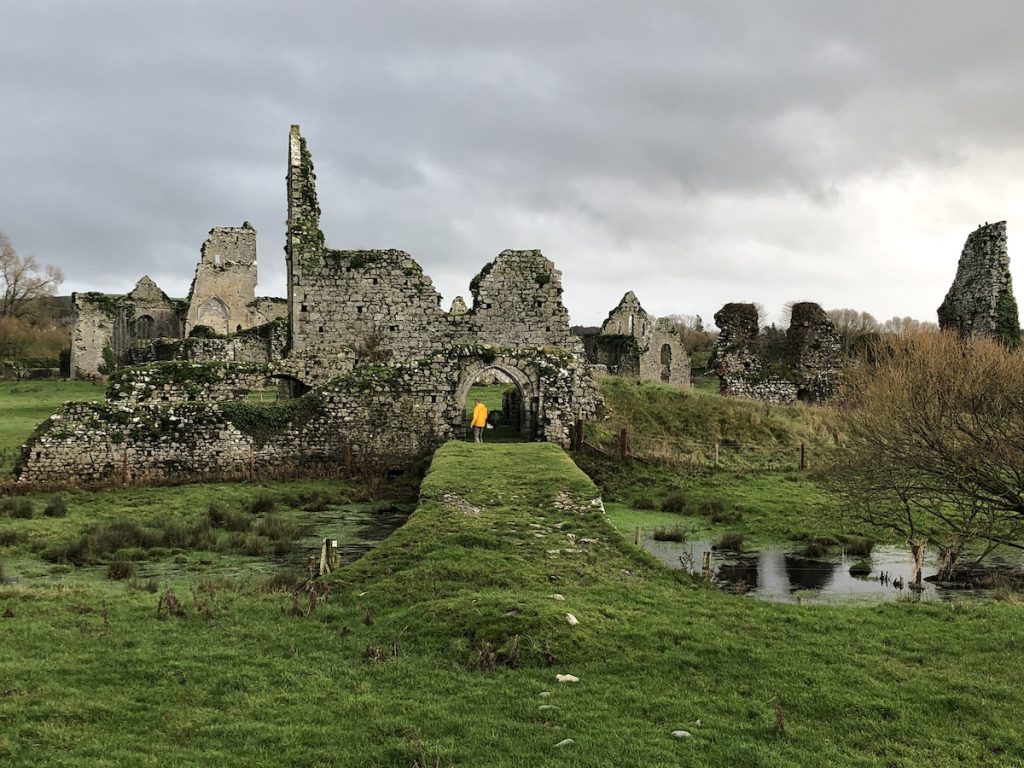
The countryside around the Rock of Cashel is scattered with ecclesiastical ruins.
The entire region bears the traces of half-forgotten martyrdoms, and the struggles of early Christian saints to wrest the island’s inhabitants from the pagan beliefs the Irish had lived with since time immemorial.
The monastic way of life began in the deserts of Egypt in the 3rd century, and these ascetic clusters soon spread to Sinai, Palestine and Syria. It is said that St. Finnian of Clonard brought it to Ireland around 548, but there were others before him — possibly even St. Patrick.
Monasticism seemed uniquely suited to the Irish temperament, and to a social system based on kinship and personal rule which could be readily adapted to the communal life of a monastery ruled by an abbot.
However it began, this way of life was flourishing throughout Ireland by the end of the 6th century. It developed along its own lines, independent from the distant influence of Rome. The great European orders — the Franciscans, Augustinians, Dominicans and Cistercians — wouldn’t arrive until the 12th century.
I could see the ruined shell of Hore Abbey (est. 1270) from atop the Rock of Cashel, but I’d spotted a faint marking on my Ordnance Survey map of another site slightly further afield.
We took the first road out of town, stopping at a grocer’s in the village of Golden for steaming cups of Bewley’s tea to warm our bones after the bitter hilltop wind, and then followed the course of the River Suir to a bend that bisected farmer’s fields.
Not much of the structure could be seen from the road. I left the car next to a wide farm gate where a stile had been built into a wall.
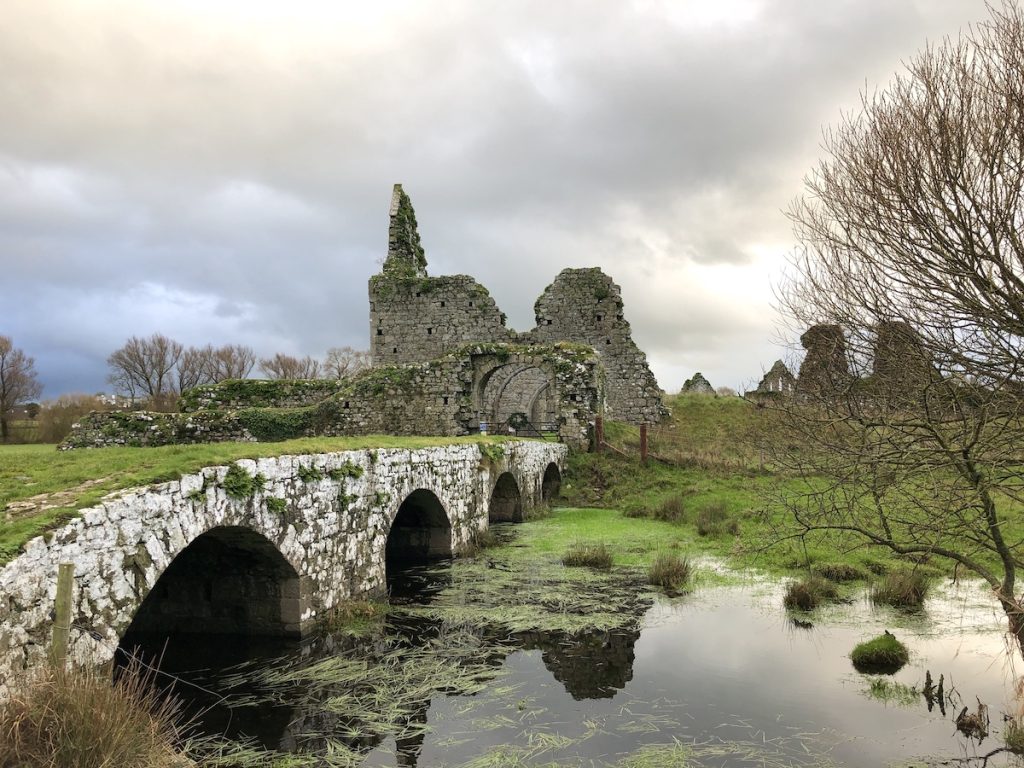
A faint path crossed the field to a 13th century bridge over the marshy trickle of a mostly dried up mill race. We entered the gatehouse by an arched doorway once guarded by a portcullis, and the abbey church came into view across an expanse of grass.
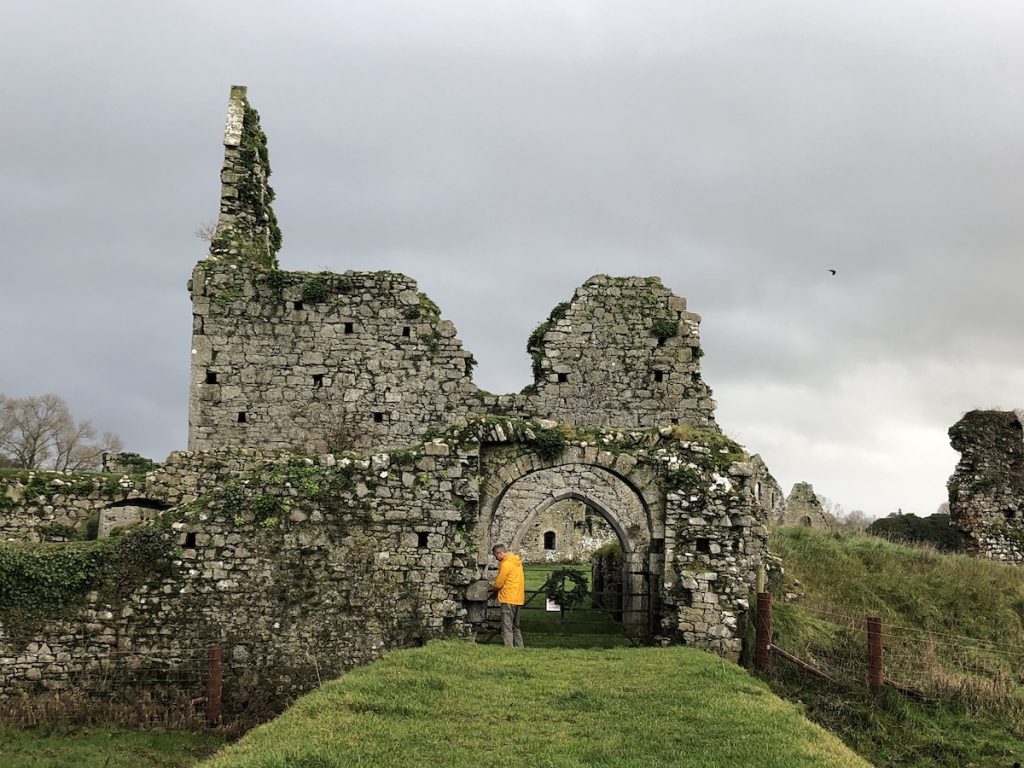
The entrance to the 37 metre long nave is now just a canyon between tall stone walls, with the altar visible at the far end. The aisles vanished long ago, and the floor was taken over by grass. Gravestones, both ancient and recent, are scattered across the space, with the mossiest among them badly askew.
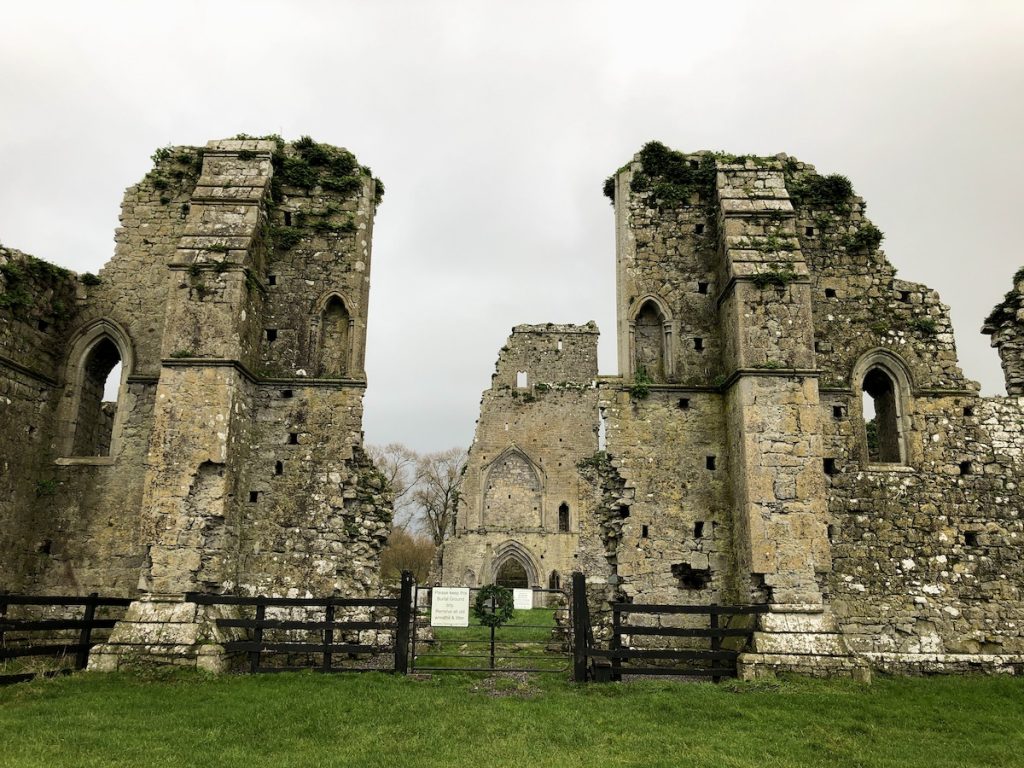
The north and south walls survive, with two side chapels and a carved four-ordered doorway leading to the crossing tower, where the remains of the sacristy can still be seen off the south transept.
Deeper into the site, we found a cloister lined by the dark doorways of vaults, the abbey’s chapter house and the refectory. The soft grass at its centre held the graves of a single family, one interred within the last couple years, the others dating back to the middle ages.
Ancient signs of renovation were evident everywhere, mute stone testament to the diminishing life of the priory as massive doorways were narrowed and vast apertures walled up to meet the needs of a shrinking community.
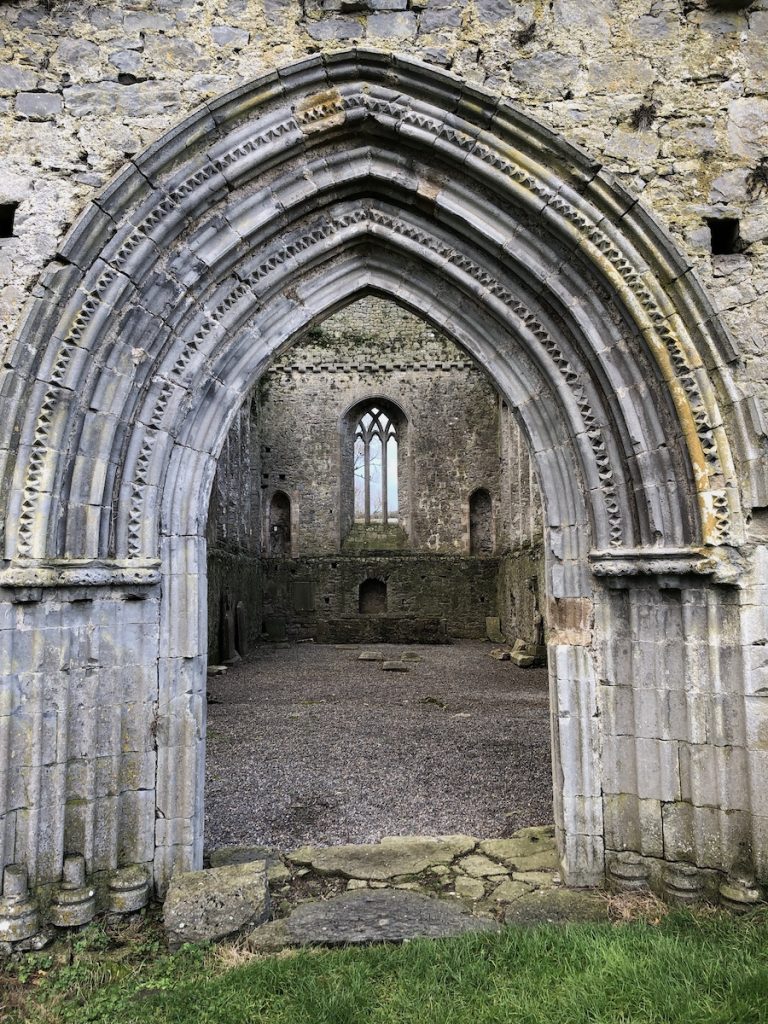
It was difficult to believe this was once the largest medieval priory in Ireland, and a major urban centre with some 2,000 people living around it.
Athassel was founded in 1192 by the Norman aristocrat William de Burgh as an Augustinian abbey dedicated to St. Edmund. Ireland at this time didn’t have large cities; instead, monasteries were the centre of both religious and secular life. They were akin to small villages, with the main church surrounded by houses and huts.
At its height, Athassel spread over more than four acres and was a force in local politics, as well as a centre of commerce and learning. Its growing influence would eventually lead to friction with the O’Briens, the local ruling family. It was burned in 1329 and again in 1581, and the town was destroyed during the two raids.
The abbey was finally dissolved in 1537 and its lands given to Thomas Butler, 10th Earl of Ormond, who allowed it to fall into ruin.
Online accounts by visitors to the site report an uneasy feeling of being watched and followed as they wandered the ruins. I only read them afterwards, but I recall a very similar feeling, which I attributed not to supernatural entities but to the possibility of being observed from the road, and to the necessity to tread softly in this silent place where the only signs of life were the jackdaws now inhabiting the walls.
I’d never been terribly interested in Christianity, a fact I attribute to my Catholic elementary school childhood, and to being dragged to church by my mother on Sunday mornings when my non-Catholic father watched John Wayne movies on television.
Why did I have to sit through yet another tedious hour of the same droning prayers at St. Mark’s when I could be wrapped in an afghan watching Robert Mitchum, Humphrey Bogart or Edward G. Robinson instead? I’d have learned far more from 1940s film noir or classic Westerns than I ever did from that arrogant hypocrite Father Walsh.
I eventually did come to appreciate the muscular prose of the King James Bible, and visionary writers like Dante and Milton.
But I only really got curious about the medieval Christian world, with its chanting monks and rock-bound anchorites, after reading about the Byzantine Empire and wandering ruined priories in Ireland.
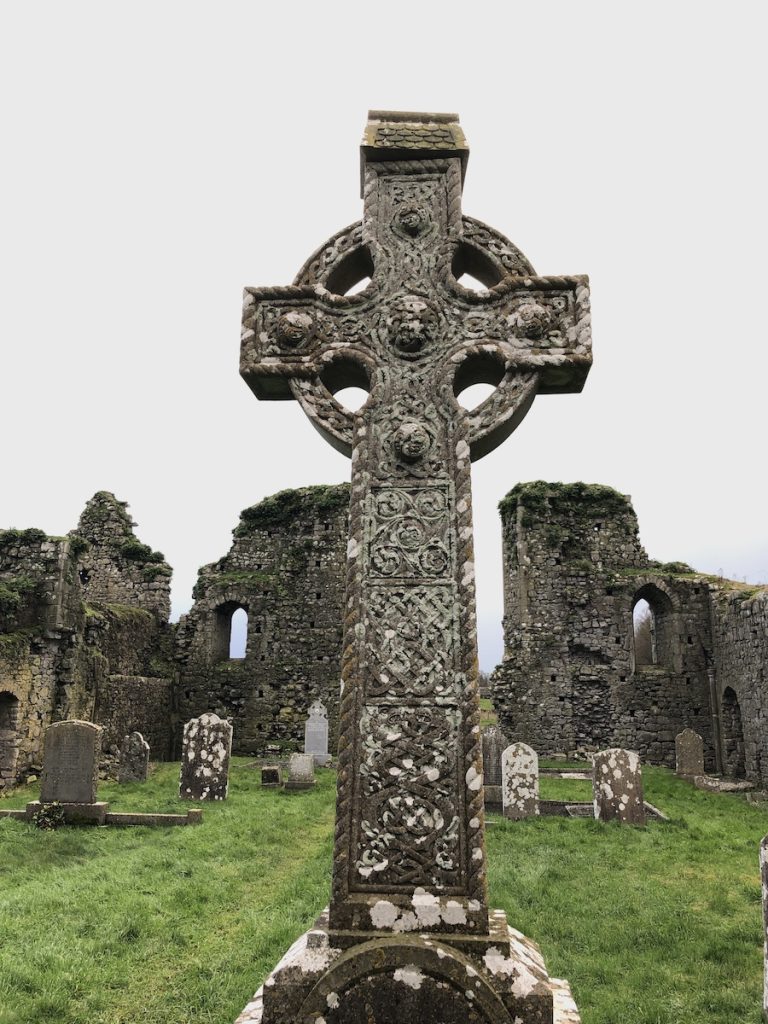
Photos ©Tomoko Goto 2022
